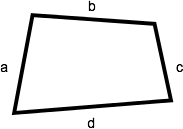Free ASVAB Practice Tests
-
Every Test is UniqueCustom software and unique templates randomize questions, answers, and variables every time you take a new test. You'll never take the same test twice!
-
1,557 Questions, Problems & Flash CardsHuge database of 668 multiple-choice questions, 135 math and algebra problems, and 754 flash cards to help you prepare for the ASVAB.
-
Detailed SolutionsGet a question wrong? All questions and problems have detailed answer explanations so you can learn exactly how to get it right the next time.
-
Know You're ReadyWant to know how you stack up? When you're done with a practice test you can compare your score to everyone else who has ever answered those questions.
-
Interactive Study GuideDetailed ASVAB study guide, MOS study guides, and line score study guides outline exactly what you should know to earn your target scores and customized tests and flash cards for each topic let you laser focus your limited study time.
-
Brand New for 2019ASVAB Test Bank has been completely redesigned for 2019 with all new questions, problems, and flash cards. And the redesign isn't done! Coming soon:
- More Content
- More questions, problems and flash cards
- Bookmarks
- Create a custom study guide with just the topics you're studying
- Score Estimator
- Custom estimate of your potential ASVAB score
Plus printable tests, Q&A, and an ad-free upgrade. Have a suggestion? Please let us know what you want!
Take an ASVAB Practice Test
Sample Practice Test Questions
Cylinder air and fuel intake valves, exhaust valves, and mounts for spark plugs and fuel injectors are contained in the:
head gasket
Cylinders act as a guide for the pistons that translate the heat energy of combustion into the mechanical energy necessary to move a vehicle. Piston rings seal the piston to the cylinder to contain combustion gases and also regulate the oil distribution between the piston and cylinder wall. A cylinder head closes in the top of the cylinder forming the combustion chamber which is sealed by a head gasket (head). The head provides space for air and fuel intake valves, exhaust valves, and mounts for spark plugs and fuel injectors.

If a = 4, b = 2, c = 9, and d = 4, what is the perimeter of this quadrilateral?
Perimeter is equal to the sum of the four sides:
p = a + b + c + d
p = 4 + 2 + 9 + 4
p = 19
When using a hacksaw, blades with __________ teeth are more appropriate for cutting thinner materials.
more
A hacksaw has replaceable blades and is used to cut metal. The blade type is chosen based on the material that is to be cut. Blades with larger numbers of teeth per inch are more appropriate for cutting thinner materials.
The number system most used in science is the:
metric system
The metric system is a number system that designates one base unit for each type of measurement. For example, the base unit for length is the meter and the base unit for mass is the gram.
Herbivores are __________ that subsist on producers like plants and fungus.
primary consumers
Primary consumers (herbivores) subsist on producers like plants and fungus. Examples are grasshoppers, cows, and plankton.